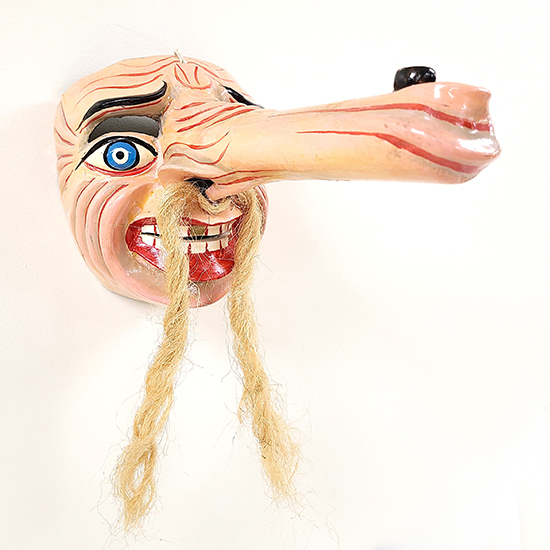Peruvian Siqlla Mask

This Peruvian Siqlla mask comes from the Cusco region of the Peruvian Andes. It was used in the Danza Siqlla, also called Danza Wayra or Danza de los Doctorcitos. This dance takes place throughout the Department of Cusco, as well as in Bolivia, during the annual Festival of the Virgin of Carmen (also called Mamacha Carmen) on July 16. It is one of many masked dances performed during the celebration.
The dance ridicules arrogant and corrupt lawyers, politicians, and other judicial authorities by calling them doctorcitos (little professors). It mocks their arbitrary and abusive use of the law to mistreat the indigenous population. Wayra is the Quechua word for “wind,” likely referencing the lies or “hot air” of the lawyers. Siqlla has no equivalent word in English.
The plot of the masquerade focuses on the trial of an indigenous man called the maqta. Musicians play accordion, flute, violin, drums, and cymbals to accompany the dance. The prosecutor is the main character, with other dancers representing additional lawyers, a mayor, and the police. The authority characters wear this type of paper mâché mask with a long, exaggerated nose and dress in colonial European suits, coats, capes, and top hats. They carry books and a whip which they tap together to complement the beat of the music. There are no standard steps to the dance.
This Peruvian Siqlla mask was donated to the Lam Museum by Dr. Tim Wallace, a professor of anthropology at North Carolina State University.
